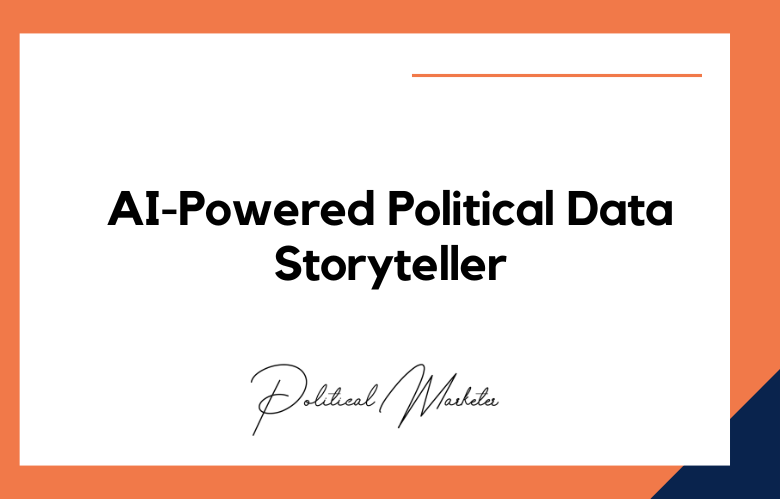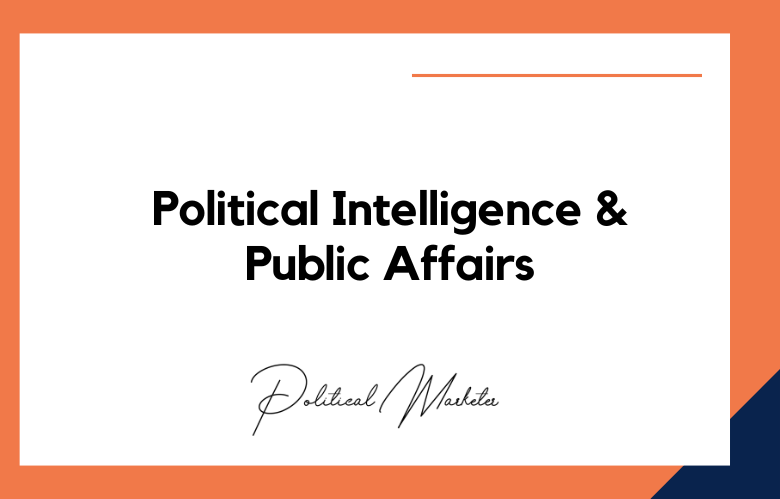“Generative Adversarial Networks (GANs) for Political Campaigns” introduces a groundbreaking approach to leveraging artificial intelligence in political campaigning. GANs, a class of machine learning algorithms, have gained prominence for their ability to generate realistic and compelling content, ranging from images and videos to text and audio.
Generative Adversarial Networks For Political Campaigns
In the context of political campaigns, GANs offer unique opportunities to create persuasive and engaging campaign materials, optimize messaging strategies, and even simulate political scenarios.
This exploration delves into how GANs can be applied in political campaigns, from generating visually appealing campaign ads and social media content to simulating voter responses and sentiment analysis. By harnessing the power of GANs, campaigns can produce personalized and targeted content that resonates with voters, driving engagement and shaping public opinion.
However, as with any technology, using GANs in political campaigns raises ethical considerations, including misinformation, manipulation, and the potential for bias. Campaigns must navigate these challenges with transparency, accountability, and a commitment to ethical AI practices to ensure that GAN-generated content is used responsibly and in the best interest of democratic discourse.
In this exploration, we will uncover the transformative potential of GANs in political campaigning, examine case studies of successful implementations, and discuss the implications for the future of political communication. “Generative Adversarial Networks for Political Campaigns” offers a glimpse into how AI technology is reshaping the landscape of political campaigning, offering new possibilities for engagement, persuasion, and public discourse.
Opposing Forces: The Power of Generative Adversarial Networks in Political Campaigns
Opposing Forces: The Power of Generative Adversarial Networks in Political Campaigns” delves into the dynamic landscape of political campaigning. Generative Adversarial Networks (GANs) emerge as powerful tools for reshaping the discourse and strategies employed by competing factions.
GANs, a revolutionary class of artificial intelligence algorithms, operate on the principle of generating realistic content by pitting two neural networks against each other – a generator and a discriminator.
This exploration unveils how GANs are leveraged in political campaigns, acting as creative allies and formidable adversaries. On the one hand, GANs empower campaigns to create compelling and persuasive content, ranging from visually captivating advertisements to engaging social media posts, amplifying their message and mobilizing supporters.
On the other hand, GANs can be deployed to produce sophisticated disinformation campaigns, fabricating fake news articles, videos, or social media posts to manipulate public opinion and sow discord.
As campaigns navigate this dual-edged sword, they confront ethical dilemmas and strategic considerations. The responsible use of GANs demands transparency, accountability, and adherence to ethical principles to safeguard the integrity of democratic processes.
Campaigns must also remain vigilant against misusing GAN-generated content by adversaries, implementing robust fact-checking mechanisms and promoting media literacy among the electorate.
Digital Duel: Harnessing GANs for Political Messaging
“Digital Duel: Harnessing GANs for Political Messaging” encapsulates the transformative potential of Generative Adversarial Networks (GANs) in revolutionizing political communication strategies. By leveraging GANs, political campaigns can generate compelling and targeted messaging materials to engage voters innovatively, including images, videos, and text.
GANs empower campaigns to create highly realistic and personalized content that resonates with diverse audiences, enabling them to tailor their messaging strategies to specific demographics, issues, and platforms. This dynamic approach enhances the effectiveness of political outreach efforts, fostering deeper connections and driving meaningful engagement with voters.
However, using GANs in political messaging raises ethical considerations, particularly concerning the potential for misinformation and manipulation. It is imperative for campaigns to employ GANs responsibly, adhering to ethical guidelines and ensuring transparency and accountability in their messaging practices.
Campaign Clash: How GANs are Revolutionizing Political Advertising
Political advertising has come a long way since the early days of campaign posters and TV spots. Today, advancements in technology have made it possible to create increasingly sophisticated and targeted political ads that reach voters on a personal level.
One such technology is Generative Adversarial Networks (GANs), artificial intelligence that can generate hyper-realistic images, videos, and even deepfakes. In this article, we’ll explore how GANs are transforming political advertising and what it means for the future of campaigning.
The Art of Deception: GANs in Political Campaign Strategies
In the cutthroat world of politics, campaigns always seek an edge over their opponents. One emerging technology that has the potential to give campaigns a competitive advantage is Generative Adversarial Networks (GANs).
GANs are artificial intelligence that can generate synthetic media, such as images, videos, and audio, nearly indistinguishable from accurate data.
While GANs have many potential applications in political campaigning, they also raise ethical concerns about deception and manipulation. In this article, we’ll explore the art of deception in political campaigns and the role that GANs may play.
The History of Deception in Political Campaigns
Deception has been a part of political campaigning for centuries. From negative attack ads to false promises, politicians have used various tactics to sway voters. However, the rise of digital media and AI has made deception easier and more effective. GANs represent the latest tool in the arsenal of political campaigners looking to gain an edge over their opponents.
Playing Politics: Using GANs to Shape the Narrative
“Playing Politics: Using GANs to Shape the Narrative” delves into the evolving dynamics of political communication, where Generative Adversarial Networks (GANs) emerge as powerful tools for shaping the narrative in the digital age.
GANs, a cutting-edge class of artificial intelligence algorithms, can generate highly realistic content, including images, videos, text, and audio, by pitting two neural networks against each other – a generator and a discriminator.
This exploration unveils how political entities harness GANs to influence public opinion, manipulate discourse, and craft persuasive narratives. GANs enable campaigns to captivate audiences, evoke emotional responses, and shape perceptions of candidates and issues by generating compelling visual assets, such as campaign advertisements, social media content, and multimedia propaganda.
However, using GANs in political communication raises ethical concerns and strategic considerations. While GANs offer unprecedented capabilities for creative expression and engagement, they also present risks of misinformation, manipulation, and the erosion of trust in democratic processes.
Political campaigns must navigate these challenges with transparency, integrity, and a commitment to ethical AI practices, ensuring that GAN-generated content is used responsibly and in the service of democratic ideals.
A Fine Line: GANs and Ethical Dilemmas in Political Campaigning
“A Fine Line: GANs and Ethical Dilemmas in Political Campaigning” delves into the complex intersection of Generative Adversarial Networks (GANs) and ethical considerations within political campaigns. While GANs offer unprecedented capabilities for creating persuasive and personalized political messaging materials, their use also raises significant ethical dilemmas.
On the one hand, GANs empower campaigns to generate highly realistic content that effectively resonates with target audiences, enabling more engaging and impactful communication strategies. This can increase voter engagement and participation, fostering a more informed electorate and strengthening democratic processes.
However, using GANs in political campaigning presents ethical challenges, particularly regarding the potential for misinformation, manipulation, and the erosion of trust in democratic institutions. The ability to create synthetic content indistinguishable from authentic materials raises concerns about the integrity of political discourse and the potential for exploitation by bad actors.
Conclusion:
Applying Generative Adversarial Networks (GANs) in political campaigns presents opportunities and challenges. GANs offer the potential to create highly realistic synthetic data, such as images, videos, or even text, which can be leveraged for various campaign purposes, including advertising, messaging, and social media engagement.
By generating content that resonates with target audiences, GANs enable campaigns to experiment with different messaging strategies and test the effectiveness of various campaign materials without the need for extensive manual production. This can lead to more dynamic and adaptive campaign approaches, ultimately enhancing outreach and engagement efforts.
However, using GANs in political campaigns raises ethical concerns, particularly regarding the potential for misinformation, manipulation, and spreading fake news. There is a risk that synthetic content generated by GANs could be used to deceive or manipulate voters, undermining the integrity of the electoral process and eroding public trust.
Call: +91 9848321284
Email: [email protected]
Generative Adversarial Networks For Political Campaigns: FAQs
What Are Generative Adversarial Networks (GANs)?
GANs are an AI model consisting of two neural networks, the generator and the discriminator, that work against each other to create highly realistic synthetic data such as images, audio, or video.
How Can GANs Be Used In Political Campaigns?
They can create compelling visual content, simulate candidate appearances, generate synthetic voices, and enhance creative assets in political messaging.
Are GANs Capable Of Generating Political Ad Content?
Yes, GANs can generate hyper-realistic political ads, banners, or personalized content variations for targeted voter groups.
Can GANs Improve Campaign Personalization?
Absolutely. GANs can generate individualized images, videos, or messages tailored to segmented voter profiles for higher engagement.
What Are The Benefits Of Using GANs In Politics?
Benefits include cost-effective content creation, scalability, real-time personalization, and simulating visual or speech-based messaging without traditional production costs.
Can GANs Be Used For Deepfake Creation In Politics?
Yes, but this is a double-edged sword—GANs can generate deepfakes, which may be misused for misinformation if not ethically regulated.
What Are Ethical Concerns Surrounding GANs In Political Use?
Ethical issues include manipulation, disinformation, consent violations, and the erosion of public trust due to synthetic media that appears real.
How Can Political Campaigns Use GANs Responsibly?
By ensuring transparency, labeling AI-generated content, and adhering to ethical guidelines that prevent the spread of misleading or harmful media.
Are GANs Useful For Simulating Public Reactions?
GAN-generated content can be tested across focus groups or digital platforms to simulate and analyze public reactions before official rollout.
Can GANs Help Political Campaigns With Branding?
They can create variations of logos, backdrops, and visuals aligned with brand guidelines, which is ideal for maintaining consistency across media.
Is There Any Regulation On GAN Usage In Elections?
Few jurisdictions currently have specific laws, but discussions about regulating AI-generated content in elections are gaining traction worldwide.
Can GANs Create Synthetic Voter Avatars For Testing Messages?
Yes, campaigns can use GANs to generate realistic avatars representing different demographics for internal testing of narratives and visuals.
How Do GANs Compare To Other AI Tools In Campaigns?
GANs excel at content generation, especially in visual and audio formats, whereas other tools, like NLP models, are better at text and sentiment analysis.
What Are Some Real-World Applications Of GANs In Political Media?
Examples include AI-generated spokesperson avatars, background visuals in campaign ads, and simulated voiceovers in explainer content.
How Do GANs Contribute To Cost Reduction In Campaign Production?
By automating creative production, GANs reduce the need for full-scale media shoots, editing teams, or repeated content creation for variants.
Can GANs Be Integrated With Augmented Reality (AR) Or Virtual Events?
Yes, GAN-generated visuals can enhance AR experiences or be integrated into virtual town halls, making events more immersive and futuristic.
Are GANs Effective In Multilingual Campaign Environments?
Using duplicate candidate footage, they can generate localized visuals or even simulate lip-sync videos in multiple languages.
What Safeguards Should Be Implemented When Using GANs?
To avoid misuse, strict content approval processes, watermarks, ethical oversight teams, and real-time monitoring should be implemented.
Can GANs Help In Political Satire Or Parody Campaigns?
They can be creatively applied to produce satire, animations, or caricatures while maintaining campaign tone and legality.
What Is The Future Of GANs In Political Campaigns?
GANs will play a significant role in hyper-realistic campaign content, AI-driven voter engagement, and immersive media experiences, provided they are governed responsibly.











